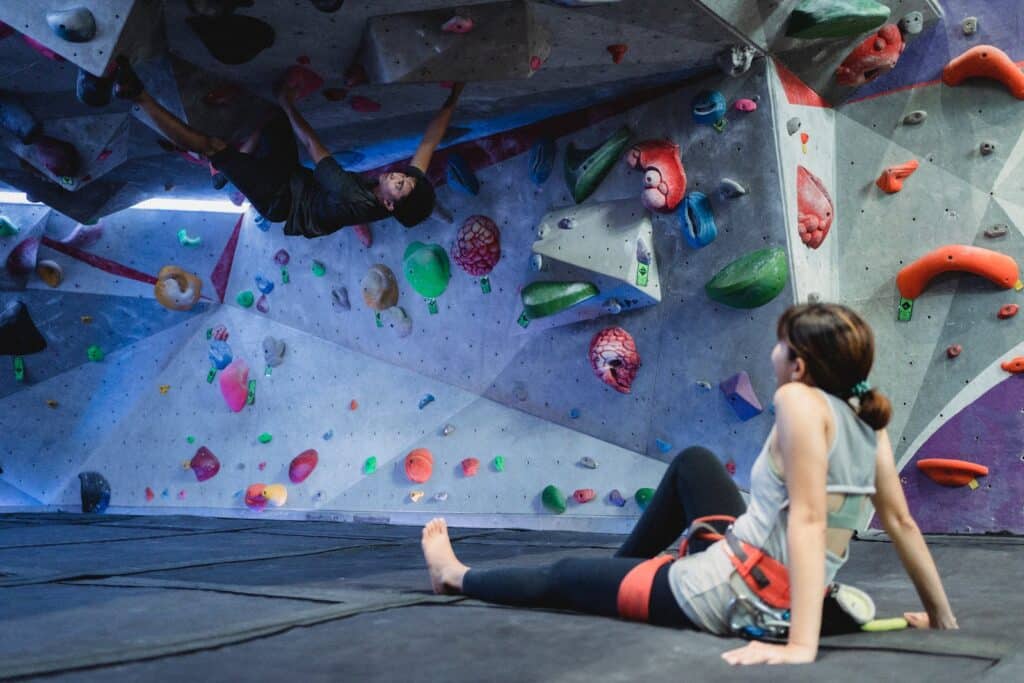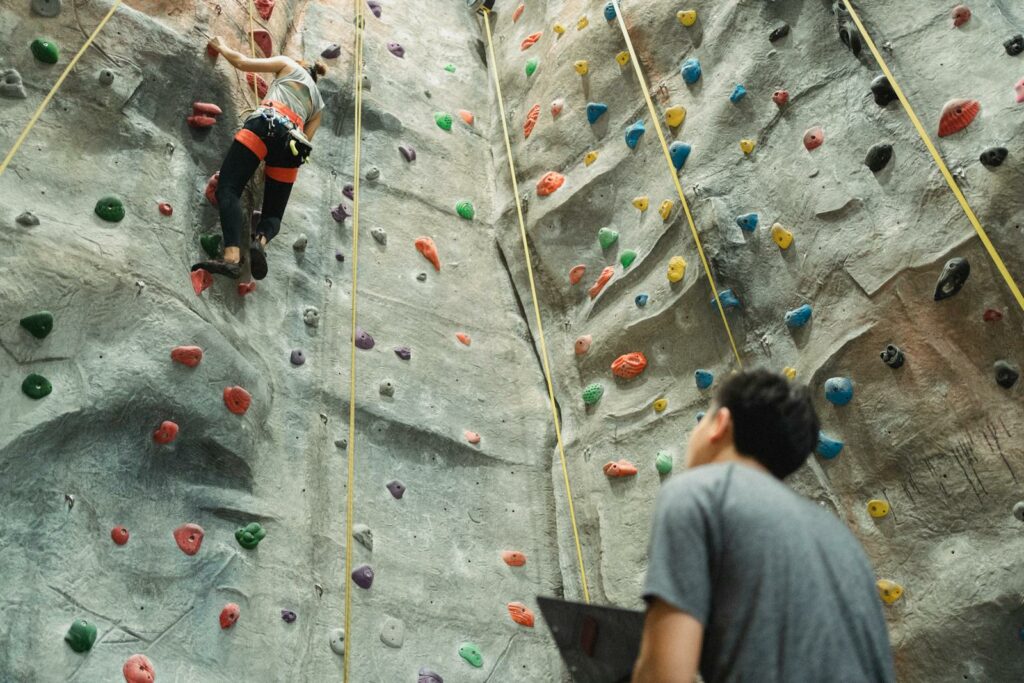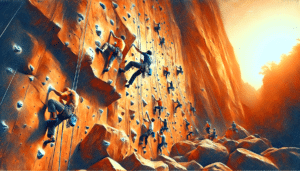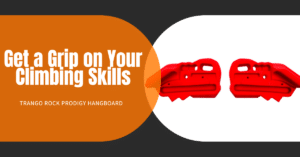Rock climbing is a sport that requires strength, technique, and mental focus. As climbers, we often strive to climb harder rock climbing grades and push ourselves to our limits. We believe that with enough determination and effort, we can improve indefinitely. However, this approach can often lead to plateaus and slow progress over time.
In this article, we will explore a different approach to climbing and improving our skills. By aiming to climb rock climbing grades just below our maximum ability, around 80 percent, we can actually see faster improvements, learn skills more quickly, and recover more efficiently between sessions. This method has been proven successful by studying high-end climbers, training with elite climbers, and reading climbing training books.
Table of Contents
ToggleThe 80 Percent Rule: Finding Your Rock Climbing Grades Limit

To begin, it’s important to understand the concept of the 80 percent rule. This means that you should aim to climb rock climbing grades, routes or boulder problems that are slightly below your hardest send. For example, if you have climbed a V5 boulder problem, you should focus on hard V3s and V4s. If you have redpointed a 5.12a route, aim for 5.11d routes. By setting your hardest projects at 80 percent of your maximum ability, you can build a strong foundation and gradually work towards your ultimate goal.
To determine what rock climbing grades fall within your 80 percent range, it’s helpful to track your ascents in a logbook or through online databases like 8a.nu or Sendage.com. These platforms also provide valuable insights into how the best climbers achieved their hardest ascents. By studying their scorecards, you’ll notice that they have built up a wide base of routes in their 80 percent range before pushing themselves further. This approach allows them to send routes more frequently and gain momentum from their successes.
Skills Acquisition: Learning New Motor Patterns

Unlike sports like running or cycling that involve repetitive movement patterns, climbing is acyclic. Each route or boulder problem presents unique movements and sequences. This makes it challenging to train for climbing using traditional methods like campusing or hangboarding, which create habitual motor patterns.
To improve in rock climbing grades, it’s crucial to focus on learning and retaining new motor patterns. The more you climb, the easier it becomes to recall moves from your muscle memory. By regularly climbing rock climbing grades that are at 80 percent of your maximum ability, you can acquire more skills and add them to your repertoire. When encountering similar moves in the future, you’ll be able to execute them more effectively.
It’s important to find a balance between challenging yourself and making the moves doable. If a move is too difficult, you won’t be able to practice it enough to engrain it into your muscle memory. By operating at 80 percent, you can climb larger volumes of quality routes and acquire new skills more quickly. Trying semi-hard rock climbing grades to figure out new sequences will allow you to learn new motor patterns effectively.
Better Recovery: Avoiding Injuries and Burnout

One of the keys to improving at climbing is to avoid injuries. Pushing yourself to climb at 100 percent all the time can increase the risk of acute and chronic injuries. Climbing at a sub-maximal level, around 80 percent, can help prevent these scenarios.
Additionally, constantly trying extremely hard can be physically and emotionally draining. After sending a route at your limit, you may experience muscular fatigue, mental burnout, or a combination of both. By climbing just below your maximum ability, you can recover faster emotionally and mentally. With a strong base built up at the 80 percent level, you’ll have a quicker return to a decent level of climbing. On a physical level, your body will have more time to rest, recover, and repair if you primarily climb below your max.
Setting Goals and Progression

As you plan your climbing goals, it’s recommended to spend the majority of your time, around 80 to 90 percent, in the 80 percent range. This means focusing on climbs that are one grade below your next target before moving on to that grade. For example, if your goal is to climb a 5.13a route after sending a 5.12d route, aim to complete three to five 5.12d routes in one season before moving on.
When choosing a project, consider the difficulty level and time commitment. A route at your limit will likely take twice as long as a route at 80 percent. If your ultimate goal requires three weeks of effort and you want to send it in the autumn, dedicate the 12 weeks prior, the summer, to working on routes in your 80 percent range. While focusing on your project, continue to send routes that you can easily complete as well. A side project at your 80 percent level, which you can try once or twice the same day after working on your main project, can help prevent burnout.
While progression through this method may be slower, it is a surefire way to become a better climber and continuously improve. By engraining the act of sending on sub-maximal routes, you can develop the skills and grit needed to push through on your limit climbs.
Sending Is a Skill: Developing Grit and Confidence

Sending a route or problem requires not only physical strength and technique but also mental fortitude. Many climbers who spend their time projecting tend to give up when things don’t go perfectly. They fall, jump off, or hang instead of pushing through the challenges. This can become a habit that hinders progress.
Climbing just below your limit, at the 80 percent range, provides an opportunity to develop the grit needed to push through on projects. By regularly clipping chains and topping out boulder problems, you can build momentum and confidence that will translate to your limit climbs. Just like your body learns specific climbing techniques, it will also learn how to push itself to succeed.
In conclusion, by adopting the 80 percent rule and focusing on climbing just below your maximum ability, you can see faster improvements, acquire new skills more quickly, and recover more efficiently. This method allows you to build a strong foundation and gradually push your limits. Remember to track your ascents, set achievable goals, and develop the grit needed to push through challenges. By following this approach, you can become a better climber and enjoy the journey of progression.










